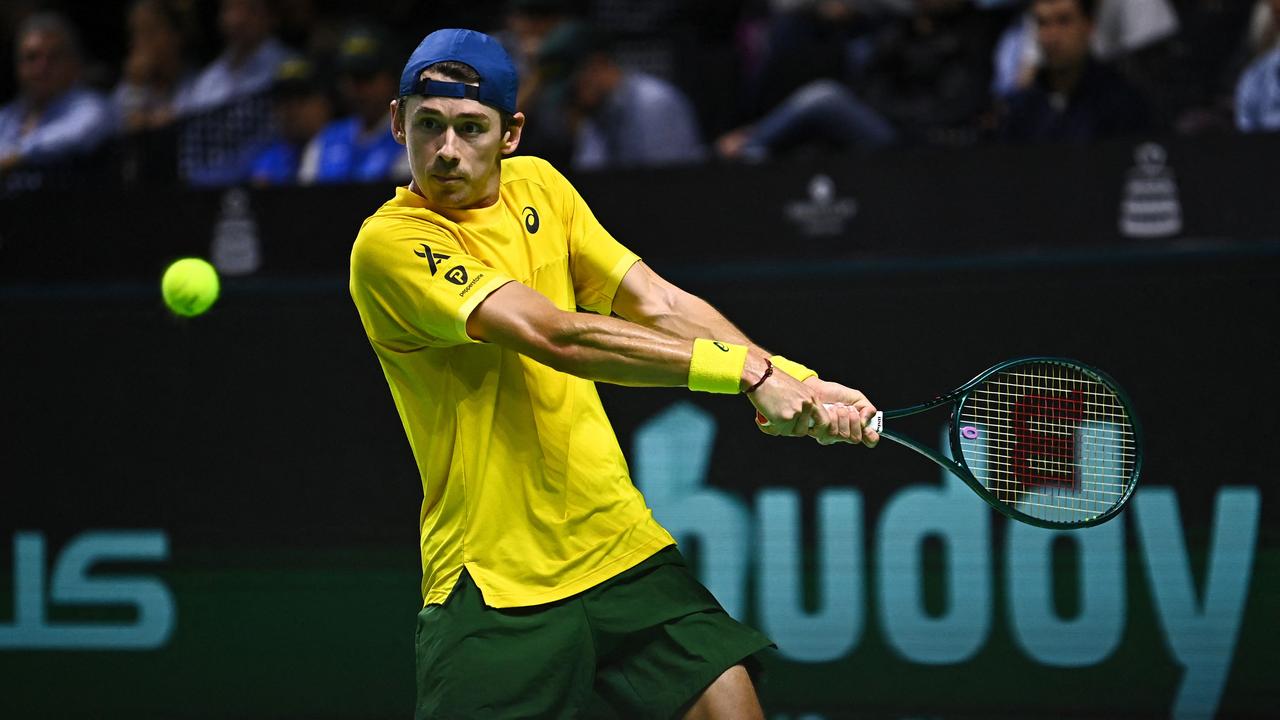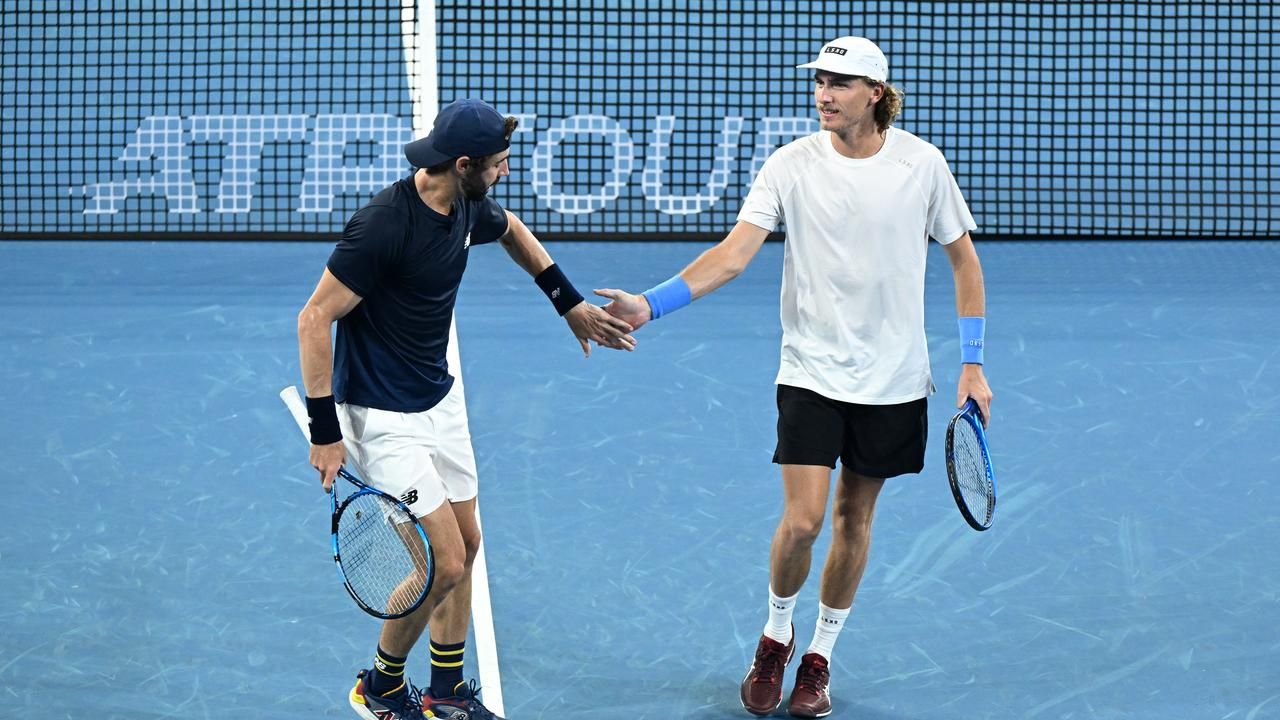Rafael Nadal and Novak Djokovic to continue titanic rivalry in Olympic clay clash in Paris

- by Admin
- July 29, 2024
The fans’ first standing ovation for Rafael Nadal occurred when he wasn’t even in their presence, merely an image shown on a video screen as he waited in a stadium hallway to walk out on the court used for the Paris Olympics and the French Open, a tournament he made his domain.
They stayed on their feet, some applauding, some raising their phones to capture images of the moment when he emerged and stepped on the red clay so familiar to him.
Chants of “Ra-fa! Ra-fa!” rang out at various times, and plenty of red-and-yellow Spanish flags flapped in the stands, as Nadal beat Marton Fucsovics of Hungary 6-1, 4-6, 6-4 in the first round on Sunday to set up a blockbuster showdown against rival Novak Djokovic at the Summer Games.
“It’s been always super special to play against Novak, no? No doubt about that. But the difference is normally we have been playing for finals or for semifinals. This,” the 38-year-old Nadal said with a chuckle, “is a second round”.
Monday afternoon’s match, scheduled to be the second of the day in Court Philippe Chatrier, will be the 60th meeting between this pair of greats, more than any other two men have played against each other in the sport’s Open era, which began in 1968.
Djokovic, a 37-year-old from Serbia, leads the head-to-head series 30-29, and his 24 grand slam titles make him the only man in tennis history with more than Nadal’s 22.
Djokovic had knee surgery in June after tearing his meniscus during the French Open in early June but recovered quickly — and well — enough to reach the Wimbledon final two weeks ago before losing to Carlos Alcaraz.
Nadal, meanwhile, has dealt with a series of injuries the past two seasons, including hip surgery in 2023, and his right thigh was taped on Sunday. He needed a finger on his right hand treated by a trainer in the third set against Fucsovics.
“Every single match that I played against Novak — almost every single match — I arrived with a different situation [than] I am [in] today. So that makes the match more difficult for me. And more unpredictable,” Nadal said. “But I always have hope, I always believe, and I’m going to give my best.”
Nadal made a last-minute decision to remain in the singles bracket, a day after he won in doubles with partner Alcaraz and said he wasn’t sure if he would participate in both events.
Not only did Nadal play on Sunday but for stretches, particularly in the early going and in crunch time down the stretch, he played very much like a version of himself everyone is used to seeing: the sprinting, sliding, grunting star who owns 22 grand slam trophies in all and won Olympic gold medals for Spain in singles in 2008 and doubles in 2016.
And the crowd loved it.
“His fighting spirit is at the top, still,” Fucsovics said.
“He is not at his best level [of] playing. But if he has a good day, he can beat anybody.”
There was no way to know at the outset, of course, whether this might be Nadal’s last singles match at these Olympics — or in this stadium that has meant so much to his career (and vice versa) — or, indeed, anywhere.
He’s been rather coy lately on the subject of his retirement, even after saying in 2023 that he figured 2024 would be it for him.
“Of course, I know that maybe it’s the last time that I play here. Maybe not,” Nadal said with a shrug. “I can’t confirm that because I don’t know.”
After going through a morning practice session to test his fitness, he made the call to play, about 18.5 hours after Nadal and Alcaraz — Spain’s old-and-new pairing of tennis superstars — won the first match they’ve ever played together as a doubles team.
When Nadal and Fucsovics began warming up under a blue sky with a hint of a breeze, there were shouts of “Ole!” Spectators rose from their seats when Nadal jumped out to a 3-0 lead after just 13 minutes en route to taking the first set against an overmatched Fucsovics, a 32-year-old who is ranked 83rd.
Nadal said he felt loved by the fans.
And he did not look like someone ready to be done, not at all, particularly at the beginning of the match.
In the second game, Nadal sprinted, then slid, to deliver a stinging cross-court backhand that won a point and elicited some gasps from the audience.
That, truly, is what it felt like: an audience fascinated with viewing, and appreciating, a performance by someone whose oeuvre is so well-known: The chase-every-ball relentlessness. The bullwhip of a lefty forehand with an over-his-head finishing pose. The grunts of exertion that punctuate so many racket swings.
Fucsovic’s career resume is no match for Nadal’s, naturally. Fucsovic has reached one grand slam quarterfinal, at Wimbledon in 2021, and exited in the first round of each major tournament so far this season.
Nadal, actually, is without a slam match win in 2024, too.
He missed the Australian Open in January because of a hurt hip muscle near where his operation was, bowed out in the first round of the French Open in May against eventual runner-up Alexander Zverev, then sat out Wimbledon in July because he wanted to avoid needing to prepare to play on the grass courts there before switching back to clay for the Olympics.
After Nadal raced through the opening set, things slowed down a bit for him. Suddenly, it was Fucsovics who was dictating baseline exchanges, especially with his own booming forehand.
Eventually, to no-one’s surprise, the muscle memory kicked in for Nadal. Soon enough, he was smacking one last forehand winner, then raising both arms with fists clenched.
Now comes a tougher task against Djokovic, one that is sure to draw a tonne of attention.
“It was a good test,” Nadal said about getting past Fucsovics across 2.5 hours. “And the good thing is, I was able to play at a good level of tennis for a while. That always gives hope.”
- Rafael Nadal’s clash with Novak Djokovic is scheduled as the second match played on Court Philippe-Chatrier tonight, meaning it won’t start before 9:30PM Monday AEST.
ABC Sport is live blogging every day of the Paris Olympics
AP
Sports content to make you think… or allow you not to. A newsletter delivered each Saturday.
The Latest News
-
December 28, 2024Boxing Day heist: Owner’s invite to ‘rob’ his store sparks all-out frenzy
-
December 28, 2024LIVE: Demon’s Aus Open chances boosted if he makes strong start to summer at United Cup
-
December 28, 2024Live: Jordan Thompson brands Purcell doping ban ‘a joke’
-
December 28, 2024Piastri’s cheeky swipe at controversial Kohli moment
-
December 28, 2024‘Stupid, stupid, stupid!’: Great eviscerates star over brainfade as Cummins move pays off




